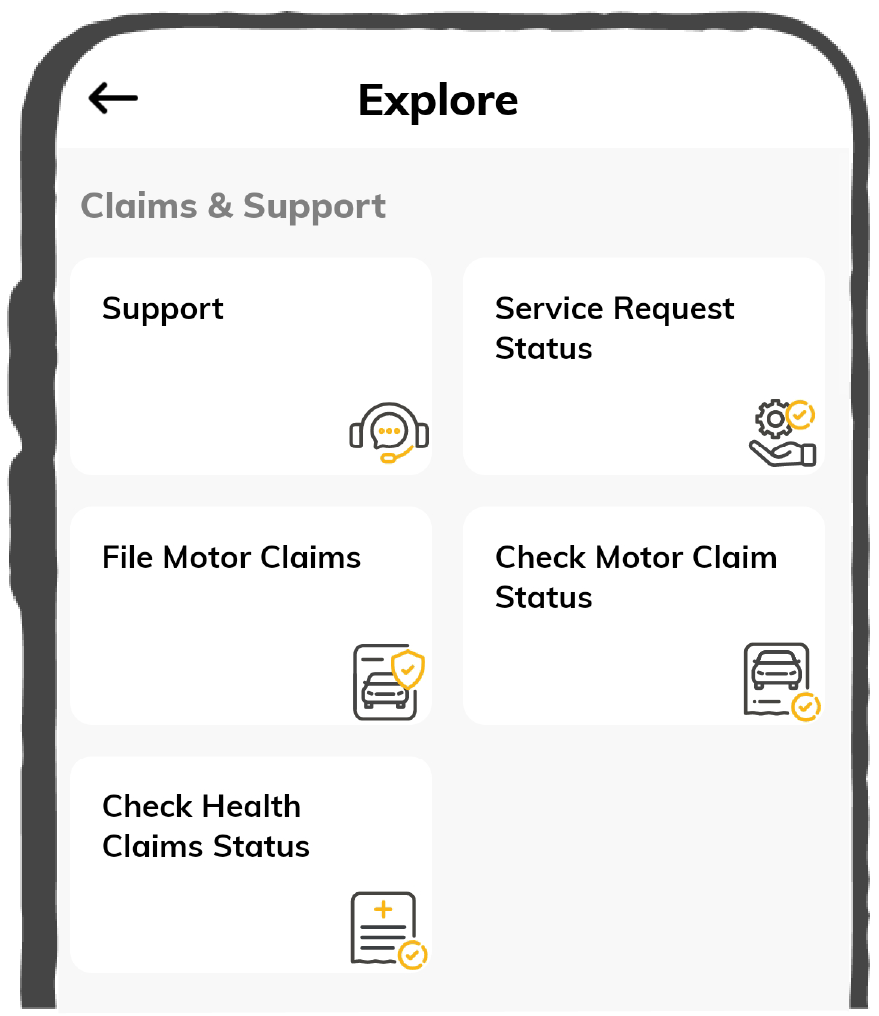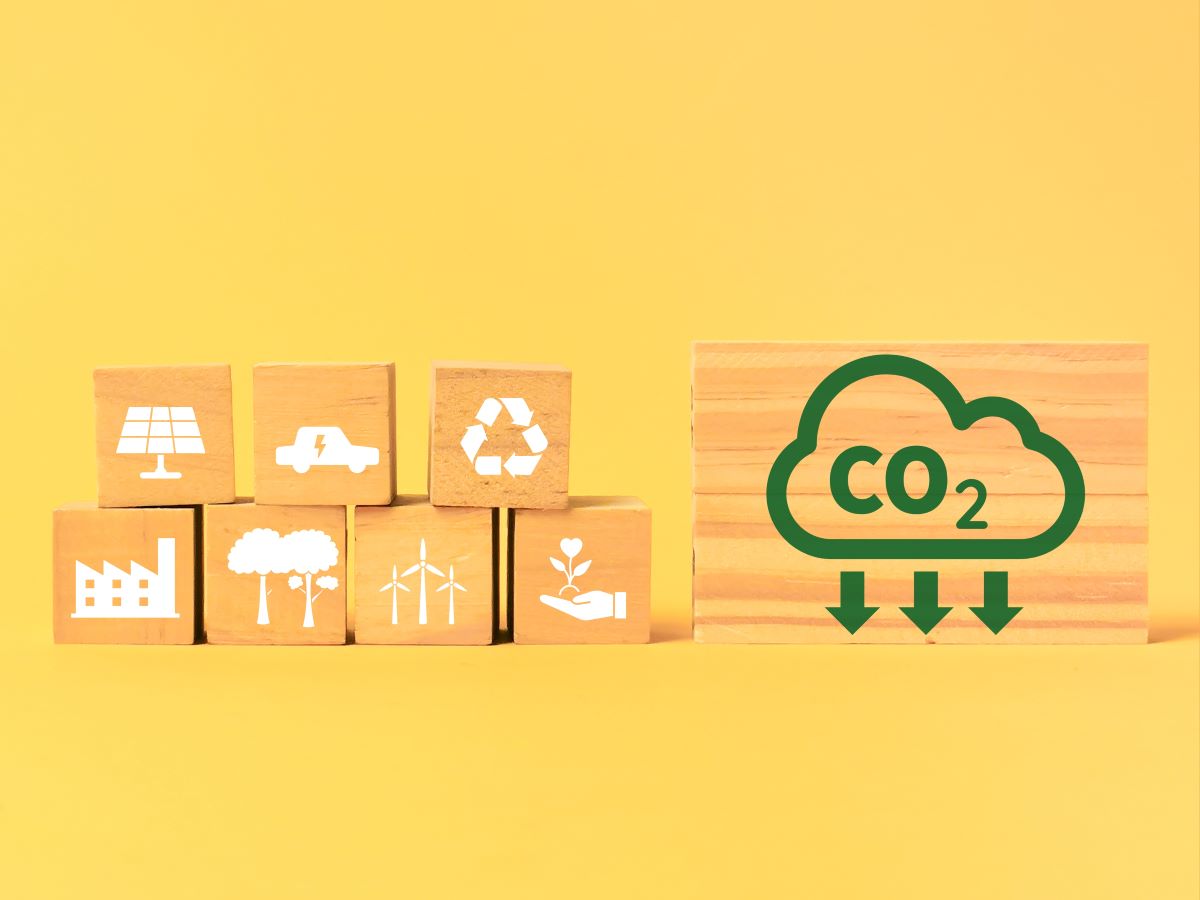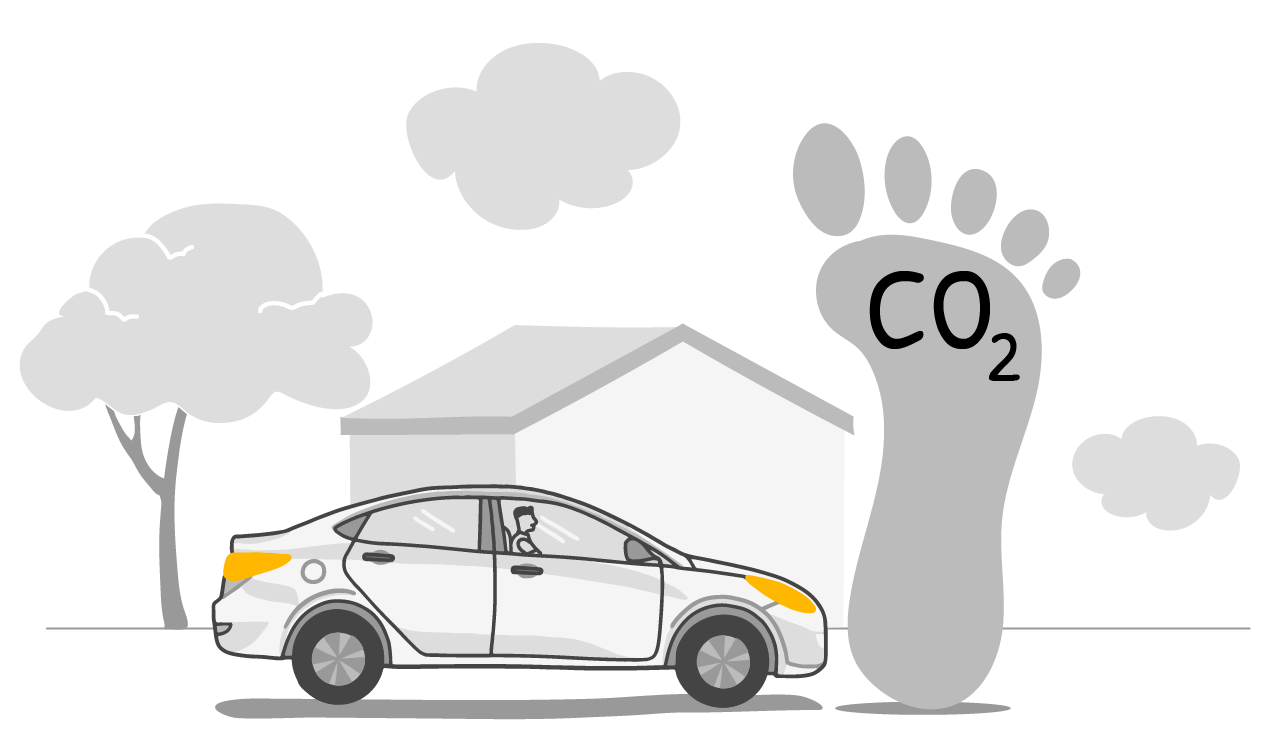7 Crore+ Customers

Affordable Premium

Accessibility Options

General

General Products
Simple & Transparent! Policies that match all your insurance needs.


37K+ Reviews
7K+ Reviews
Scan to download

Life

Life Products
Digit Life is here! To help you save & secure your loved ones' future in the most simplified way.


37K+ Reviews
7K+ Reviews
Scan to download

Claims
Claims
We'll be there! Whenever and however you'll need us.


37K+ Reviews
7K+ Reviews
Scan to download

Resources
Resources
All the more reasons to feel the Digit simplicity in your life!
 Tools & Calculators
Tools & Calculators


37K+ Reviews
7K+ Reviews
Scan to download

37K+ Reviews
7K+ Reviews
Select Preferred Language
Our WhatsApp number cannot be used for calls. This is a chat only number.

Enter your Mobile Number to get Download Link on WhatsApp.
You can also Scan this QR Code and Download the App.


You’ve probably noticed that the term 'carbon footprint' is often used when discussing climate change.
But what exactly does it mean?
A carbon footprint measures greenhouse gas emissions - carbon dioxide and methane that trap heat in the atmosphere, resulting in global warming. It is the sum of these greenhouse gases (GHGs) released directly or indirectly by our actions (usually in tonnes per year).
You can calculate the carbon footprint of individuals, families, companies, events, products and even countries.
It is vital to keep carbon emissions under control to ensure a sustainable future. In this article, we will explore some factors that contribute to your carbon footprint and steps you can take to reduce your carbon footprint.
Your carbon footprint is measured by your lifestyle and regular activities that result in greenhouse gas emissions. Some of the most common examples of these lifestyle factors and activities include:
Read More:
The Digit App provides you with an easy and reliable Carbon Footprint Calculator, where you can measure and check your carbon footprint. Through our Carbon Footprint Calculator, we analyse the data using three simple parameters:
After you've entered all your information, you can view your carbon footprint. You can also see your offset footprint (ie; the number of trees it takes to offset your annual footprint) and tips on how to decrease your carbon footprint.
Reducing your carbon footprint is important because:
When we cut carbon emissions, we help ensure a cleaner environment for our generation and for generations yet to come.
In today's day and age, it is nearly impossible to eradicate one's carbon footprint. Everything you do leaves some amount of emission behind. Yet, we believe that every drop of water makes a mighty ocean.
So, here are 10 easy steps to reduce your carbon footprint:

Minimize Food Waste
Right from growth to transportation, high quantities of carbon are emitted in the food production process. When food goes to waste, it also contributes to landfill waste where high amounts of greenhouse gases are produced. To reduce your carbon footprint, you can start by avoiding wasting food. Practice composting, segregate waste, and consider 'food miles' when you purchase food products.
Use Sustainable Products
You can start small by switching from plastic products to sustainable ones. You can also choose organic or recycled fabric for your clothes. Practice conserving water and electricity. Buy items locally to lower your dependence on long-distance transportation.

Grow Your Own Garden
Plants absorb carbon dioxide from the atmosphere and reduce the effects of global warming. Start a vegetable garden and plant your own produce. By growing your own garden, you can use organic waste from your kitchen to start a compost. You can also use conventional fertilizers to keep your soil full of nutrients.

Address the Root Causes
After you have calculated your carbon footprint, you will be able to see your biggest contributors to understand where you can reduce your carbon footprint. Be it the type of food you eat, your lifestyle choices, mode of transport, energy efficiency, etc., you can analyse and take active steps to reduce your carbon footprint and live a greener life.
3 R's
Reducing, Reusing and Recycling items at your home is a great place to start. Using the same items for different reasons is a small but efficient step that can reduce your overall footprint. You can also try to build and live in an eco-friendly and efficient home.
Carbon Offsets
It is an action intended to compensate for carbon dioxide emissions into the atmosphere due to industrial or other human activity. An organisation takes actions like planting trees, building wind farms, solar power plants, etc., to compensate for part or all their carbon footprint. If they purchase enough to offset their carbon footprint, they effectively become carbon neutral.
Energy Conservation
Reduce energy demand by using it more efficiently. Practice transitioning to more renewable energy sources (as baby steps, you can use natural light instead of electricity at home, set up rainwater harvesting systems, etc.) or use innovative technology that prioritises lower carbon emissions.
Carpooling or Using Public Transport
Since another major source of carbon emission comes from transportation, an easy way to reduce this is by using public transport, carpooling, using eco-friendly modes of transport and flying less. For e.g.: if you live close to work but still use your bike or car to travel, you can try walking, cycling, public transport or carpooling instead. This can effectively bring down your carbon footprint. You can also read our article on sustainable tourism to understand how you can opt for a green mode of transport when touring the world.
Invest Your Money Wisely
It is not uncommon to hear that big banks and firms use your investments to fund or contribute to the fossil fuel industry. Before investing, you can research about where your investments are going to choose smarter and eco-friendly options.
Act and Vote
Carbon Footprint and Climate Change are global problems that affect every individual regardless of their background. Big companies are responsible for over 75% of toxic emissions. By voting for the right people who are willing to act on curbing climate change and take active steps to advance to an eco-friendly mode of living, you can significantly help tackle this problem.
On a large scale, there are six major factors drive CO2 emissions. They are:
On an individualistic scale, factors that contribute to carbon emissions include:
Businesses and individual citizens alike must make a commitment to a more sustainable future considering climate change. It is important to act as a sustainability leader and set an example for others to follow.
In the end, reducing your carbon footprint is a smart move for the environment and for you. You can save money in the long run and contribute to protecting our world for future generations by limiting your energy use and waste.
Choosing food products that have less red meat, opting for plant-based food, eating fresh, locally produced food items, eating seasonally and by reducing food wastage, you can reduce your food carbon footprint.
Choosing food products that have less red meat, opting for plant-based food, eating fresh, locally produced food items, eating seasonally and by reducing food wastage, you can reduce your food carbon footprint.
Carbon footprint increases because of increased burning of fossil fuels, deforestation, increased industrial and development activities, generation of more waste and pollution into the environment and atmosphere.
Carbon footprint increases because of increased burning of fossil fuels, deforestation, increased industrial and development activities, generation of more waste and pollution into the environment and atmosphere.
Plant-based diets can reduce your carbon footprint as they require less land, water, and energy for growth and production. They also produce fewer emissions than meat-based foods. Plant-based diets can reduce diet-related greenhouse gas emissions by 49%.
Plant-based diets can reduce your carbon footprint as they require less land, water, and energy for growth and production. They also produce fewer emissions than meat-based foods. Plant-based diets can reduce diet-related greenhouse gas emissions by 49%.
Major sources of carbon dioxide emissions are housing, transportation, food, consumption, deforestation, burning fossil fuels, cement production, decomposition, ocean release and more.
Major sources of carbon dioxide emissions are housing, transportation, food, consumption, deforestation, burning fossil fuels, cement production, decomposition, ocean release and more.